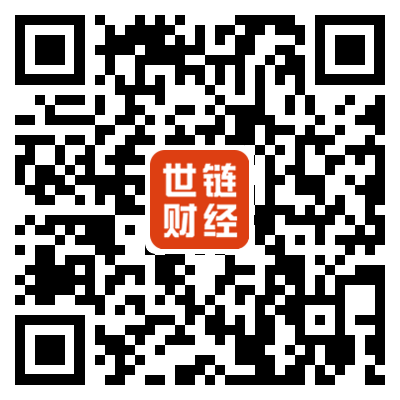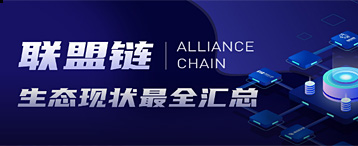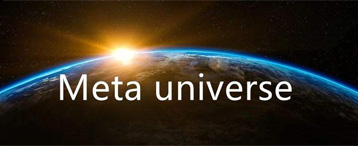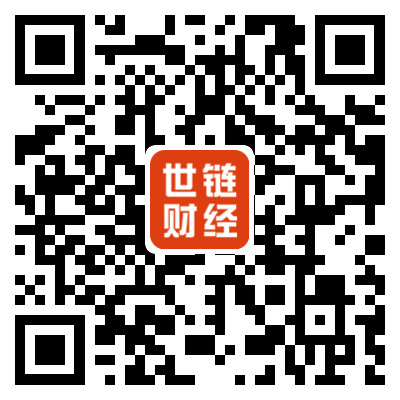-
What is blockchain based technology? How does it work?
 linkweb3
linkweb3 2022-11-29
2022-11-29 3028
3028 Tech
Tech
-
Summary:What is blockchain based technology? Blockchain technology is a structure that stores public affairs in multiple databases through the network connected to the point -to -point node.
Blockchain technology is a structure that stores public affairs (also known as blocks) in multiple databases (called "chains") through the network connected to the point -to -point node. Generally, this storage is called "digital ledger". Blockchain -based technology can be understood as a distributed computer network. Let ’s take a look at what is blockchain technology and what is blockchain -based technology?
What is blockchain?
The blockchain is a distributed database or classification of the computer network nodes. As a database, the blockchain stores information in a digital format. The blockchain is famous for its key role in cryptocurrency systems such as Bitcoin to maintain safe and decentralized transaction records. The innovation of the blockchain is that it guarantees the preservation and security of the data records, and has trusted without the need of trusted third parties.
A key difference between a typical database and blockchain is the structure of the data. The blockchain collects information in the form of a group, called blocks, saving information sets. The block has a certain storage capacity, and when the filling is closed and linked to the previously filled block, it forms a data chain called the blockchain. All new information after the new block is compiled into a newly formed block. Once filled, the block will also be added to the chain.
The database is usually structured into a table, while the blockchain, as the name suggests, structures its data into blocks (blocks) stringed together. When implementing it in a decentralized manner, this data structure inherently forms an irreversible data timeline. When a block is filled, it is fixed and becomes part of this timeline. Each block in the chain is given an accurate time stamp when it is added to the chain.
Key points:
Blockchain is a shared database that is different from typical databases in the way of storage information; the blockchain stores data in the block, and then these block links are linked together by cryptography.
As the new data arrives, it is input into a new block. Once the block is full of data, it will link to the previous block, which makes the data link together in the order of time.
Different types of information can be stored on the blockchain, but the most common purpose so far is the classification account for transactions.
As far as Bitcoin is concerned, the blockchain is used in a decentralized manner, so no individual or group has control -instead, all users retain their control together.
The decentralized blockchain is immutable, which means that the input data is irreversible. For Bitcoin, this means that the transaction will be permanently recorded and anyone can view anyone.
What is blockchain technology?
Blockchain is sometimes called distributed ledger technology (DLT). By using decentralized networks and encrypted distribution technology, the history of any digital assets cannot be changed and transparent.
The operation method of blockchain technology can be made with the operation method of Google Docs documentation. When you create a Google document and share it with a group of people, the document is only distributed rather than copying or transmission. This creates a decentralized distribution chain that allows everyone to access basic documents at the same time. No one was locked waiting for the other party's change, and at the same time all the modifications of the document were recorded in real time, making the change completely transparent. However, a significant gap that needs to be noted is that unlike Google Docs, the original content and data on the blockchain cannot be modified once it is written, which improves its safety level.
Of course, blockchain is more complicated than Google documents, but this analogy is appropriate because it illustrates the key idea of this technology.
Blockchain meaning: blockchain explanation
Blockchain is a digital classification account or database that stored the encryption block of digital asset data and links it together to form a single real source arranged in the order of time.
Digital assets are distributed, not copied or transferred.
Digital assets are decentralized, allowing real -time access, transparency and governance between multiple parties.
The blockchain classification account is transparent -any change made in the case will be recorded in the case, thereby maintaining integrity and trust.
The blockchain classification account is open and built with inherent security measures to make it the main technology of almost all departments.
How does the blockchain work?
The goal of the blockchain is to allow records and distribute digital information, but cannot be edited. In this way, the blockchain is the basis of unchanging transaction records that cannot be changed or cannot be changed, deleted or destroyed. This is why the blockchain is also called distributed ledger technology (DLT).
The concept of blockchain was first proposed in 1991 as a research project. It was widely used for the first time: Bitcoin, appeared in 2009. In the past few years, through the creation of various cryptocurrencies and decentralized finance (DEFI) applications, the use of blockchain has exploded, and it cannot be replaced by the tokens (NFT) and smart contracts.
Is the blockchain safe?
Blockchain technology realizes decentralized security and trust in various ways. First of all, the new block always stores linearly in the order of time. In other words, they are always added to the "end" of the blockchain. After adding the block to the end of the blockchain, it is extremely difficult to return and change the content of the block, unless most people in the network have reached a consensus. That's because each block contains its own hash values, the hash value of its previous block, and the timestamp mentioned earlier. The hash code is created by a mathematical function, which converts digital information into a string of numbers and letters. If the information is edited in any way, the hash code will be changed.
Assuming a hacker also runs a node on the blockchain network, he wants to change the blockchain and steal cryptocurrencies from others. If they want to change their single copy, it will no longer be consistent with other people's copies. When others are against their copy, they will see that this copy stands out, and the hacker chain version will be considered illegal and abandoned.
In order to successfully perform such hackers, hackers need to control and change 51% or more blockchain copies at the same time, so that their new copies can become most copies, thereby becoming an agreed chain. Such attacks also require a lot of funds and resources, because they need to redo all the pieces because they now have different timestamps and hash codes.
Due to the scale and growth rate of many cryptocurrency networks, the cost of achieving this feat may not be overcome. This will not only be very expensive, but also may have no results. Doing such things will not be ignored, because network members will see such a fierce change in the blockchain. Then, the network member puts a new version of the hard fork to the unsightful chain. This will cause the attacked version of the tokens to plummet, making the attack ultimately meaningless because the bad guys control worthless assets. If the bad guys want to attack the new fork of Bitcoin, the same situation will happen. It is built in this way, so participating in the network is more economical than attacking the network.
How to use the blockchain?
As we know now, the block storage on the Bitcoin blockchain stores data about currency transactions. Today, more than 10,000 other cryptocurrency systems run on the blockchain. But it turns out that the blockchain is actually a reliable way to store other types of transaction data.
Some companies that have already adopted blockchain include Wal -Mart, Pfizer, AIG, Siemens, United Lahua and so on. For example, IBM created its Food Trust blockchain to track the journey of food to the destination.
Why do you do this? There have been countless E. coli, Salmonella, and Liszist bacteria in the food industry, and harmful substances were accidentally introduced into food. In the past, it took weeks to find the source or pathogenic cause of these diseases from people's diet. The use of the blockchain enables the brand to track the route from the place of origin to each stop to the delivery. If food is found to be polluted, you can go back to its source through each site. Not only that, these companies can now see everything that it may have touched, so that problems can be discovered faster and may save their lives. This is an example of the blockchain in practice, but there are many other forms of blockchain implementation.
What are the functions of blockchain technology?
Blockchain technology has the following main functions:
1. Decentralization
Decentralization in the blockchain refers to transferring control and decision -making power from centralized entities (individuals, organizations or groups) to distributed networks. Decentralized blockchain network uses transparency to reduce the need for trust among participants. These networks also prevent participants from exerting power or control in a way to weaken network functionality.
2. Unsurable
Uncomvisible refers to certain contents that cannot be changed or changed. Once a participant records the transaction to the shared classification account, no participant can tamper the transaction. If a transaction record contains errors, you must add new transactions to correct errors, and the entire network can be seen in the two transactions.
3. Consensus
The blockchain system will establish rules for participants to record consensus on transactions. New transactions can be recorded only when most participants in the network agree.
What key points do blockchain technology contain?
The blockchain architecture contains the following main points:
1. Distributed classification account
Distributed classification accounts are shared databases used to store transactions in the blockchain network, such as shared files that can be edited by each person in the team. Among most shared text editors, any person with editing authority can delete the entire file. But distributed classification ledger technology has strict rules for who can edit and how to edit. Once the entry has been recorded, you cannot delete them.
2. Smart contract
Many companies use smart contracts to manage business contracts without the help of third parties. Smart contracts are programs stored on the blockchain system, which will run automatically when they meet the pre -determined conditions. These procedures will be checked in running conditions in order to complete the transaction with confidence. For example, a logistics company may have a smart contract, which agrees that once the product arrives at the port, it will automatically pay.
3. Public key encryption
Public key encryption is a security function, which is used in the unique participants in the blockchain network. This mechanism will generate two sets of keys for network members. A set of keys is a public key, and everyone in the network is public. Another set of keys is private key, which is unique for each member. The private key and the public key are used to unlock the data in the classification account.
For example, John and Jill are two members in the network. John recorded a transaction and encrypted with its private key. Jill can use its public key to decrypt the transaction. In this way, Jill can be confident that John has performed the transaction. If John's private key has been tampered with, Jill's public key will not play a role.
The future of blockchain technology
Although the bitcoin system is the most famous application of blockchain technology, thousands of cryptocurrencies are based on this emerging technology. Although Bitcoin can successfully replace other forms of traditional payment methods to be observed, the application of blockchain technology is growing rapidly, and supporters said that they may cause tremendous changes in various industries.
Frequently Asked Questions:
What is a simple blockchain?
Simply put, the blockchain is a shared database or ledger. Data clips are stored in the data structure called block, and each node of the network has an accurate copy of the entire database. Safety is guaranteed, because if someone tries to edit or delete the entry in the copy of the classification account, most people will not reflect this change and will be rejected.
How many blockchains are there?
The number of real -time blockchain is growing at a faster and faster. As of 2022, there were more than 10,000 active cryptocurrencies based on blockchain, and hundreds of non -cryptocurrency blockchain.
What is the difference between private blockchain and public blockchain?
Public blockchain, also known as open or non -licensed blockchain, is a blockchain that can freely join the network and build nodes. Due to its openness, these blockchains must be protected through cryptography and consensus systems (such as proof of work (POW)).
On the other hand, private ownership may be approved before each node is required to be approved before joining. Because nodes are considered credible, the safety layer does not need to be so strong.
Blockchain terms are vague and even controversial. Sometimes, the term "blockchain technology" rather than "blockchain" is more popular to indicate that blockchain pays attention to computers or technology. Generally, this term is only used to point out the ideological form related to the form of technical specifications. This makes it difficult to classify the given application as a blockchain -based technology. Although there is no clear definition, the blockchain usually shows similarity to Bitcoin. Bitcoin is usually considered a prototype example, repeating its technical characteristics or following similar goals.
Disclaimer:As an open information publishing platform, shilian only represents the author's personal views and has nothing to do with shilian. If the article, picture, audio or video contains infringement, violation or other inappropriate remarks, please provide relevant materials and send it to: 2785592653@qq.com.
Hint:The information provided on this site does not represent any investment suggestion. Investment is risky, and you must be cautious when entering the market.
ShilianFan group:Provide the latest hot news, airdrop candy, red envelopes and other benefits, WeChat: rtt4322.
















